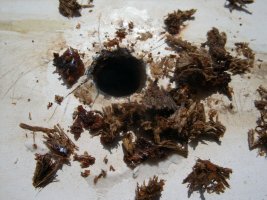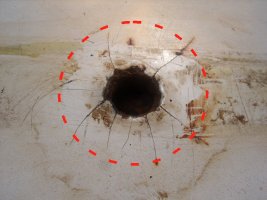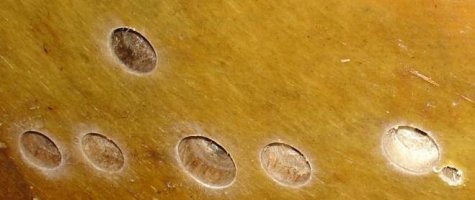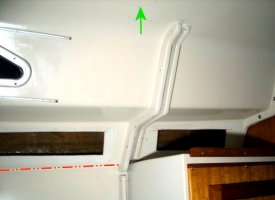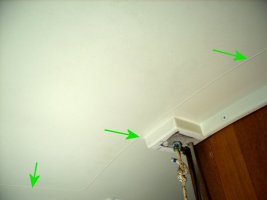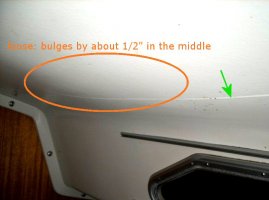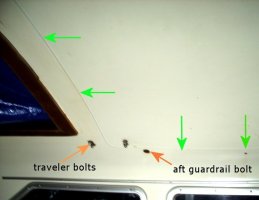Joe
Member II
I decided to find the leak coming from the topside grabrails on my E25cb today.
After I wrestled the postside grabrail off, I was dismayed at the amount of wet oatmeal I found (first picture). I dug around with a small allen key about as far as the marked dotted red circle shows (second picture). The stuff just kept on coming.
I would appreciate help on these questions:
How accurate is a moisture meter at edge detection? Would it help me determine how large this particular wet area is to any degree of certainty?
Is this a possible application for CPES?
I was hoping to follow the procedures detailed on this site for rebedding hardware by pouring epoxy 'plugs' and then redrilling but this area seems to be getting a bit large for that solution.
I should also mention that the headliner inside the cabin bulges in a few places (like reverse oilcanning). I haven't paid much attention to that until today. Could it be related to this moisture problem?
Thanks!
After I wrestled the postside grabrail off, I was dismayed at the amount of wet oatmeal I found (first picture). I dug around with a small allen key about as far as the marked dotted red circle shows (second picture). The stuff just kept on coming.
I would appreciate help on these questions:
How accurate is a moisture meter at edge detection? Would it help me determine how large this particular wet area is to any degree of certainty?
Is this a possible application for CPES?
I was hoping to follow the procedures detailed on this site for rebedding hardware by pouring epoxy 'plugs' and then redrilling but this area seems to be getting a bit large for that solution.
I should also mention that the headliner inside the cabin bulges in a few places (like reverse oilcanning). I haven't paid much attention to that until today. Could it be related to this moisture problem?
Thanks!

